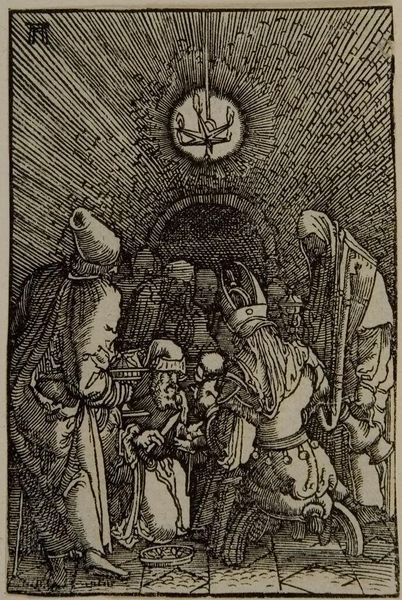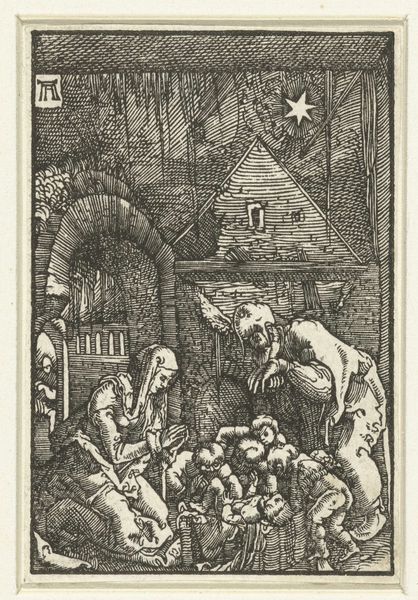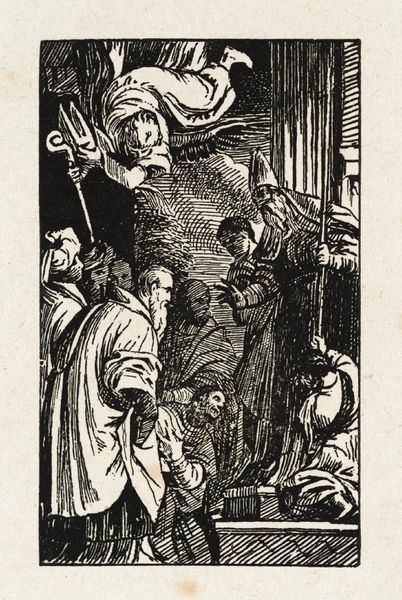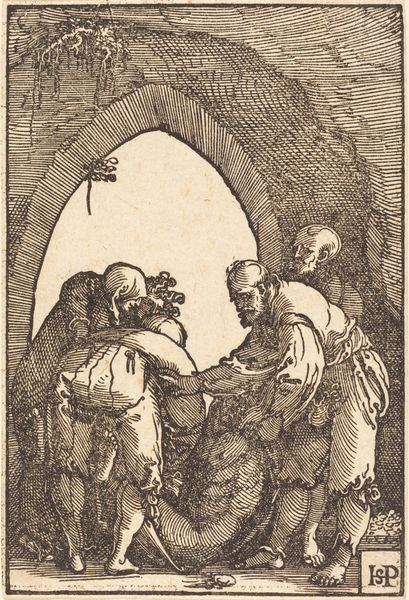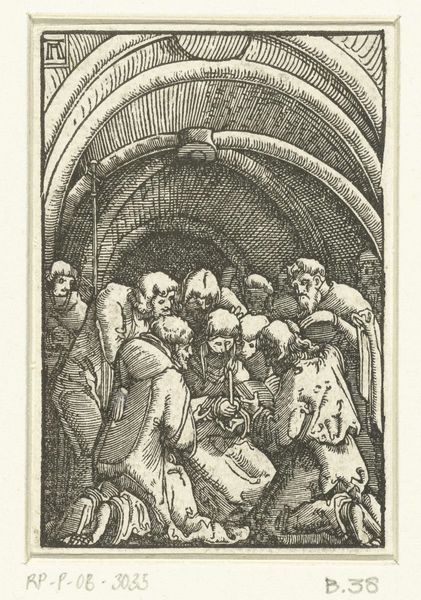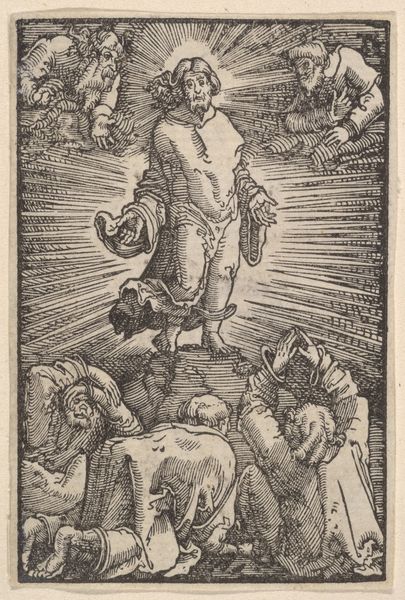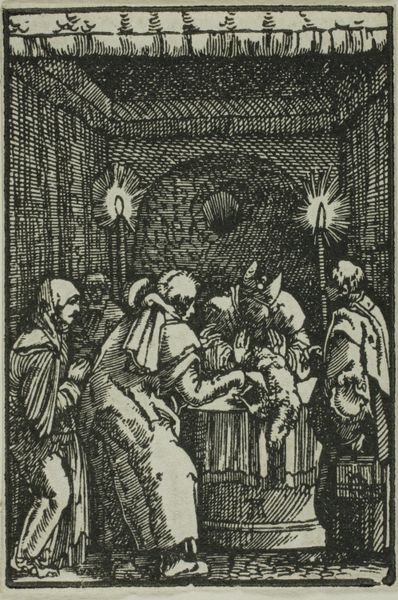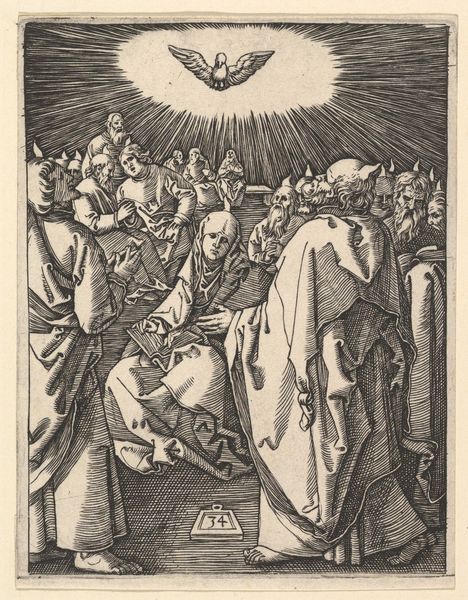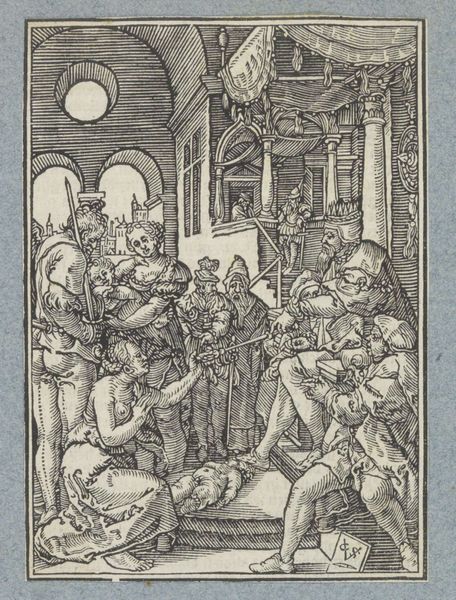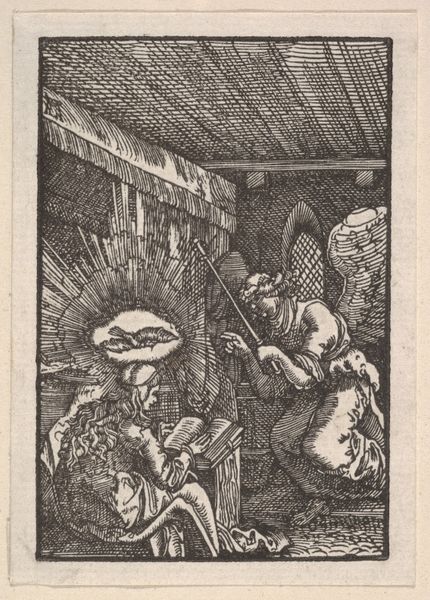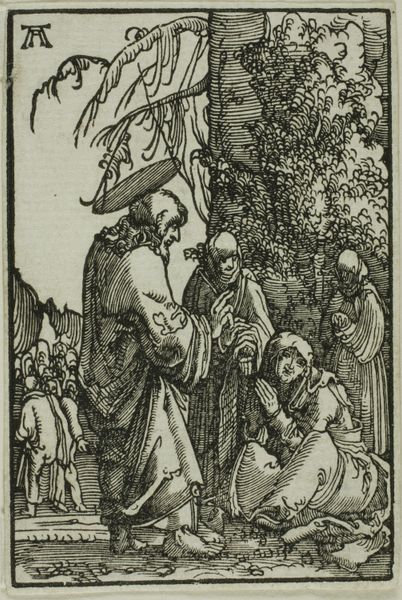
print, engraving
#
pen drawing
# print
#
pen illustration
#
pen sketch
#
old engraving style
#
figuration
#
ink line art
#
pen-ink sketch
#
history-painting
#
northern-renaissance
#
engraving
Dimensions: height 72 mm, width 48 mm
Copyright: Rijks Museum: Open Domain
Editor: This is Albrecht Altdorfer’s "Circumcision of Christ," an engraving created sometime between 1506 and 1538. It has an amazing level of detail despite its small scale. What strikes me most is the intensity of the light emanating from the chandelier. How do you see this print? Curator: The "Circumcision" by Altdorfer isn't just a religious scene, but also a complex statement about artistic production and social dynamics. Note the emphasis on line work. The very process of engraving – the labour involved in creating these precise lines – transforms a religious narrative into a commodity, something to be bought, sold, and consumed. How does this meticulous detail relate to the value placed on the image, and its role within the market? Editor: I see what you mean about the labor creating the image. The value as a piece for distribution. Are you saying the physical effort put into this engraving, contributes to how it was valued at the time? Curator: Precisely. Furthermore, consider the availability of prints versus, say, painted panels at the time. Engravings made art accessible to a broader segment of the population. How do you think the proliferation of such imagery impacted society's relationship with both religious narratives and the very idea of artistic creation? This relates directly to shifts in material culture. Editor: That's a great point! Thinking about who had access to this image… I had never considered that. Curator: Exactly. And notice how Altdorfer’s skill in rendering the fabric and the intricate chandelier might serve to elevate the status of the artisan. It invites us to appreciate the skill of craftsmanship involved, and it connects with broader societal valuing and appreciation of commodities, even religious iconography, made via engraving at this time. Editor: Thanks for pointing that out! That definitely offers a new lens to view prints from this era. I appreciate that! Curator: Absolutely. Focusing on the means of production and distribution gives us a more profound understanding of its cultural value.
Comments
No comments
Be the first to comment and join the conversation on the ultimate creative platform.
